I’ve been learning a lot about flashlights over the last couple of years and that has meant learning a lot about LED’s. All of the flashlights I have bought have an LED as the light source. For the last couple of years the biggest name in LED’s for flashlights has been Cree, a company in North Carolina. Right after getting into flashlights, they introduced the XP-G LED which put out a lot more light than their earlier XP-E and XR-E LED’s. About a year later, they came out with an even brighter LED called the XM-L which can put out maybe 800 lumens compared to 400 for the XP-G and maybe 200 for the XP-E. But the XM-L also uses a lot more power. In addition to bigger and brighter LED’s, they have also introduced tints other than cool white, such as neutral and warm white tints. Also they have started focusing on higher Color Rendering Index values. Sunlight or incandescent light has a value of 100, but LED’s are often around 70. But “high CRI” LED’s are around 85 or 90.
Here are the XP-E and XP-G LED’s:

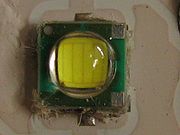
The dominance of Cree has left their competitors, including Philips, Seoul Semiconductor, Nichia, and Luminus with small pieces of the pie. Well, the flashlight pie is actually pretty small. I think most of the LED’s are sold for commercial lighting in signs and fixtures. And the holy grail is to become economically competitive enough that people will use LED light bulbs. As I wrote about earlier, they’re not quite there yet, selling high performance bulbs for $50 each, while dimmer bulbs with cool tints and low CRI values are affordable but pointless.
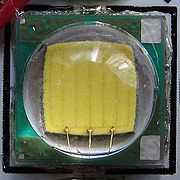
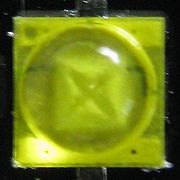
I went ahead and ordered a couple of Nichia 219’s that arrived last week. I also ordered an XT-E from a Chinese dealer that was the first to make them available. A namebrand company, EagleTac, introduced the XT-E as an option in their new line of flashlights (in addition to the XP-G or XM-L). It seemed like things were starting to get interesting. I got the XT-E in a drop-in form that I could put in one of several hosts I have to make a complete flashlight. But when I tried it out there was a bright yellow dot in the center of the brightest part of the beam. There was also a yellowish band around the bright part of the beam. Other than that it seemed pretty bright and the design is pretty interesting because instead of using a flat light-emitting “die” the die has a pyramid with an X etched into it. This 3D shape is supposed to let more light out of the die than a smooth surface. I also found out that EagleTac turned out to be less than satisfied with their XT-E flashlights and recalled them, I suspect due to yellow spots in the beam. Such is the danger of early adoption.
The Nichia 219 started getting rave reviews right away. I ordered LED’s mounted to a base that I could get then glue into a drop-in and wire for power with some soldering. I really like the neutral tint which matches some of my favorite tints by Cree, but I couldn’t see much of a difference in terms of CRI. Later on I took some pictures, though, and I have to admit there may be something to the high CRI (though I still wonder if the value is really 92 or more like the minimum value of 85, according to the LED’s spec sheet).
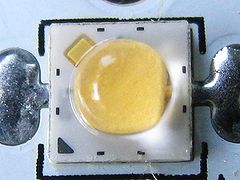
Then tonight I saw where a different Chinese budget shop was offering the Samsung 3535 in a drop-in, so I thought I would go ahead and try it out. It doesn’t promise anything, but I do want to get a picture of it for the Flashlight Wiki, and the ad revenue from Wiki can cover the $10 price of a drop-in I don’t really need. So maybe I’ll get that in a couple of weeks.
Here’s a comparison of of the Nichia 219 with the Cree XT-E (put the mouse over the picture for the XT-E):
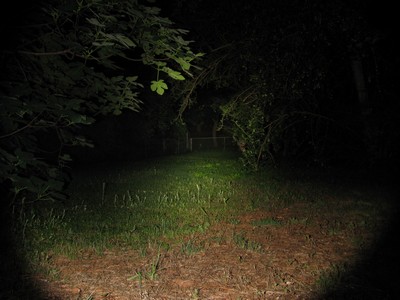


I like the mouse-over idea. I can report that our *replacement* first household LED lightbulb… so technically our second… is still running fine. The first must have been a bad apple.
Another LED company, Osram, came out with a new LED that I had forgotten about. But a little while back I had clicked on a web ad for it and it said you could get a free sample. Yesterday I got home and had gotten a flat package all the way from Germany. Inside was some propaganda and an Osram Oslon Square LED. Based on the orangish color of the LED, it probably has a warm tint and high CRI. I’ll add a picture to the article.